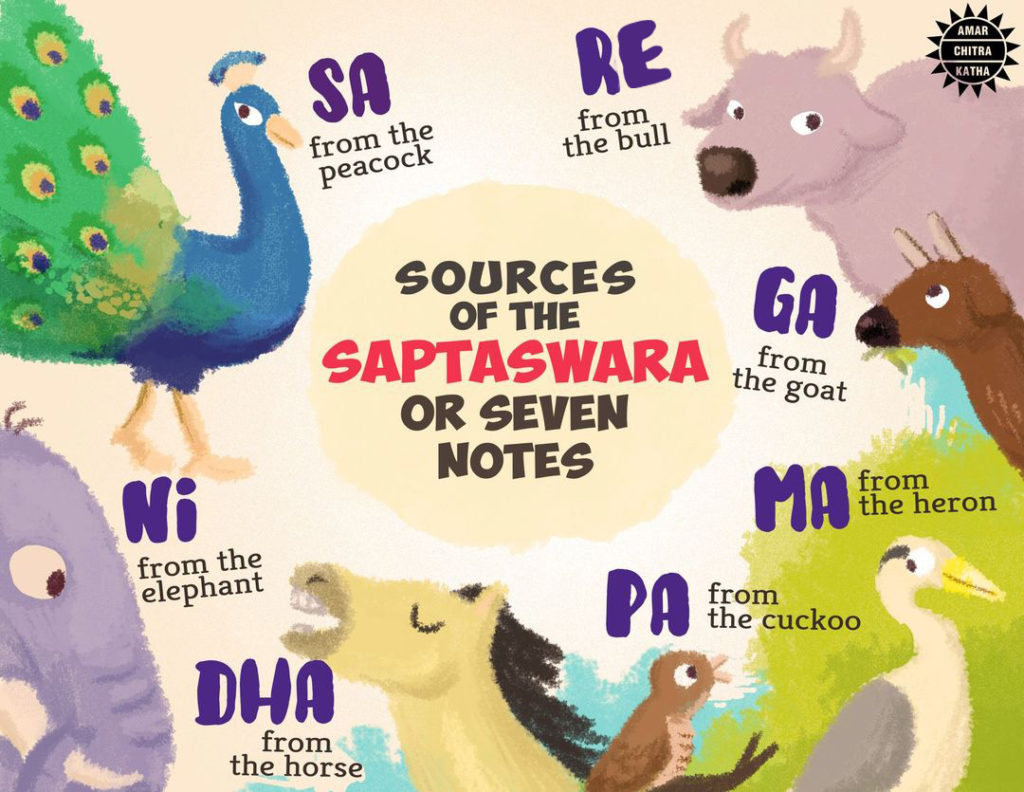Nature in the Saptaswara
- December 26, 2023


Nature in the Saptaswara
- December 26, 2023
The Saptaswara (the seven notes) form the basis of Indian Classical Music. Did you know that these notes are said to have originated from nature? The notes – Sa, Re, Ga, Ma, Pa, Dha, Ni – are believed to come from the sounds made by various animals.

Shadja or Sa: Cry of the peacock in monsoon
Rishaba or Re: Grunting of bulls
To receive more such stories in your Inbox & WhatsApp, Please share your Email and Mobile number.
Gandhara or Ga: Bleating of goats in a flock
Madhyama or Ma: Cry of the heron
Pancham or Pa: Cuckoo’s song in the spring
Dhaivata or Dha: Neighing of the horse
Nishada or Ni: Trumpeting of the elephant
To receive more such stories in your Inbox & WhatsApp, Please share your Email and Mobile number.

Comic of The Month
The Naval Journey of India Book I
This book is the first of a three-book series that takes a deep and detailed look at India's Naval History and a deep insight into the lives of our men and women in white. But any series on the Indian Navy has to start at the very beginning - exploring India's celebrated maritime history. Join our little hero, Bharat, and his grandfather, Commodore Sagar, as they sail into the deep blue waters of time. Book I of The Naval Journey of India takes a sweeping look at India's maritime endeavours, how the seas impacted us over millennia and how the oceans made us who we are.